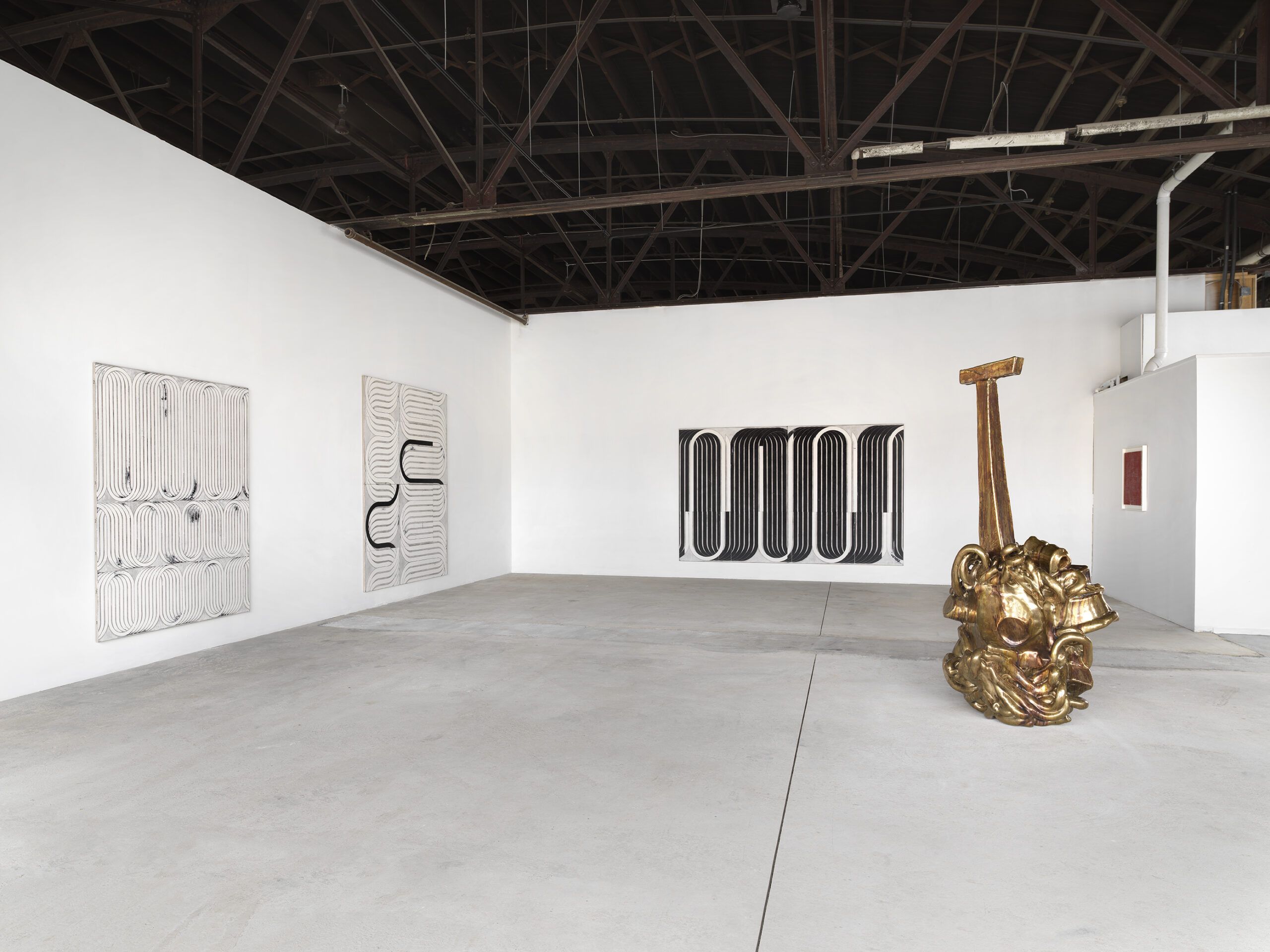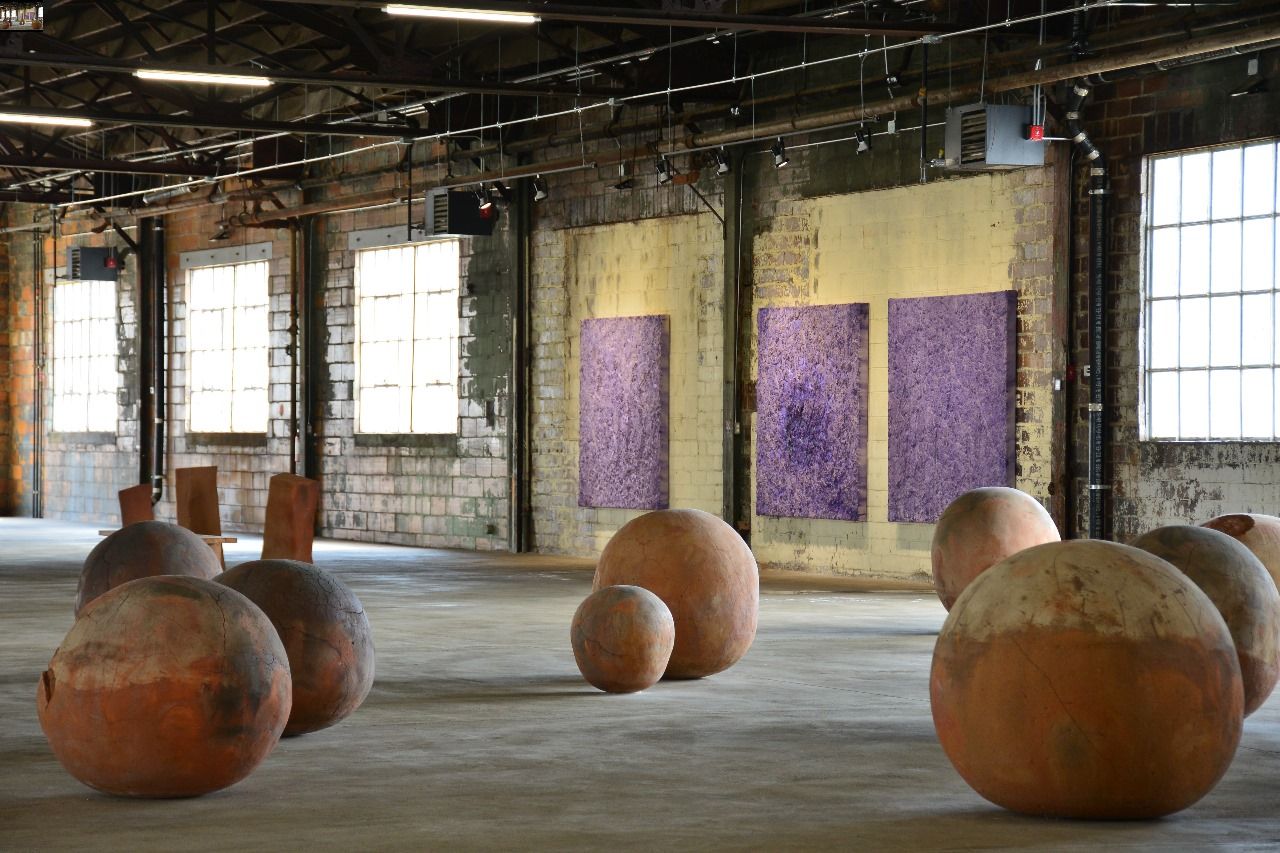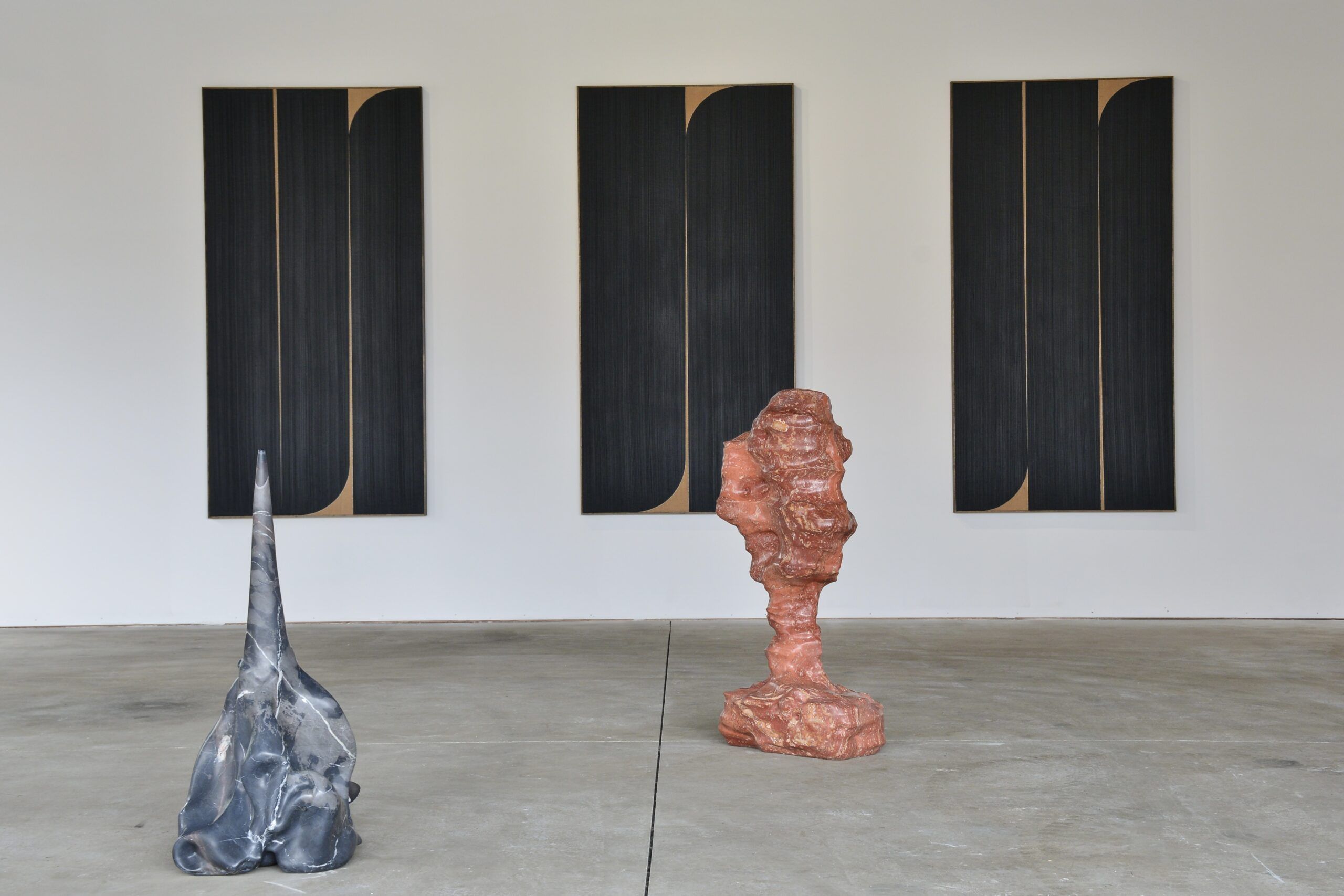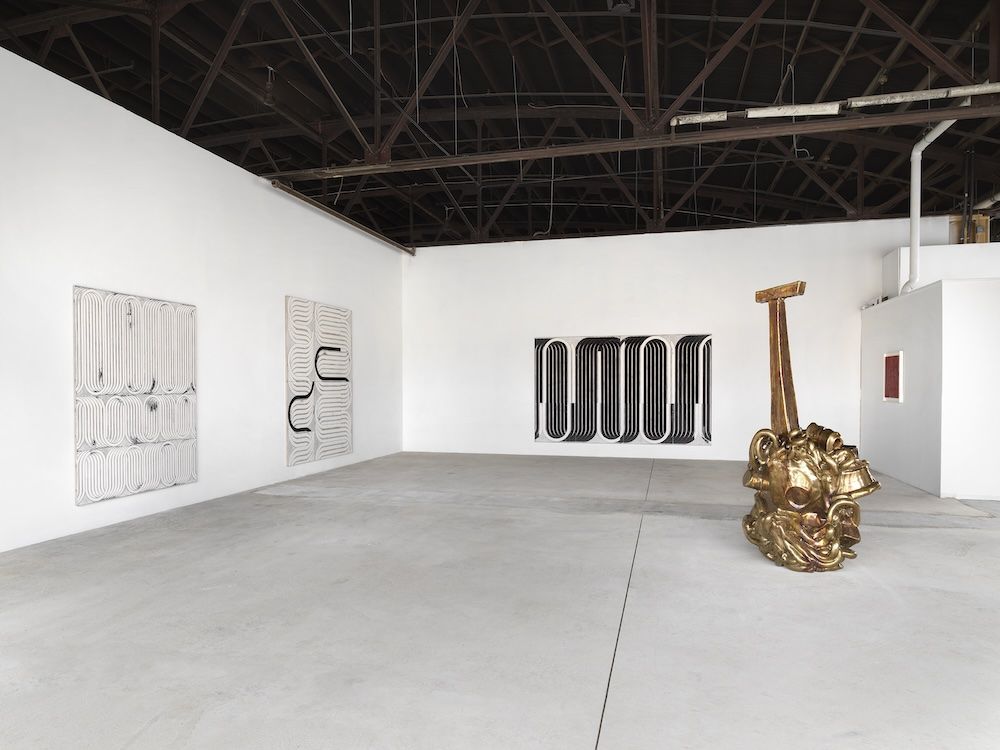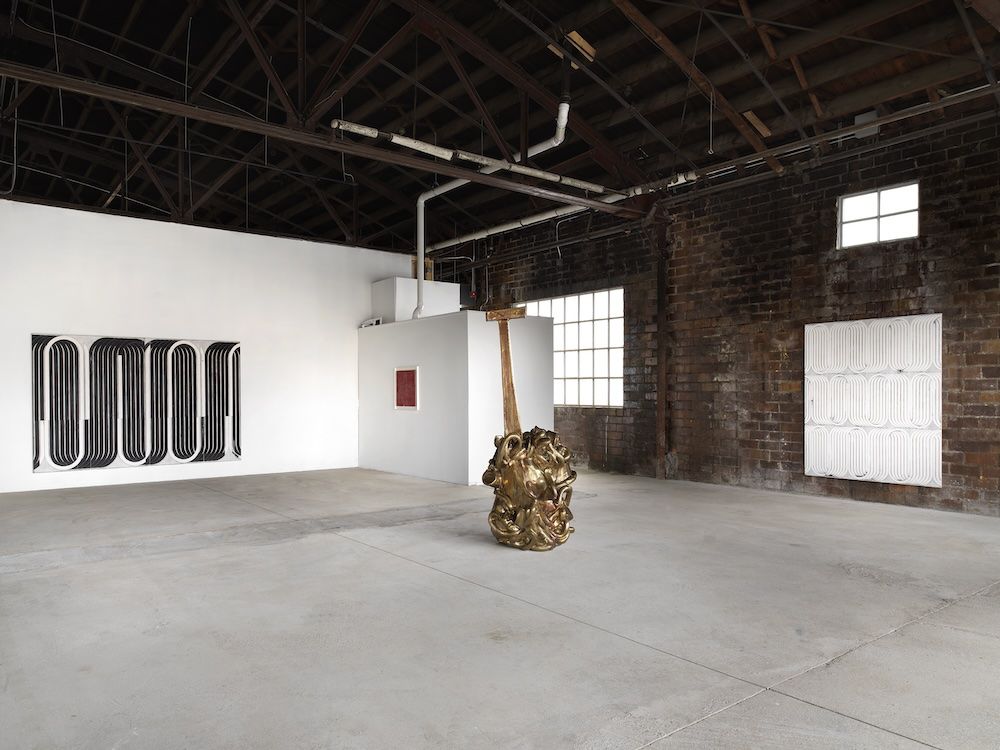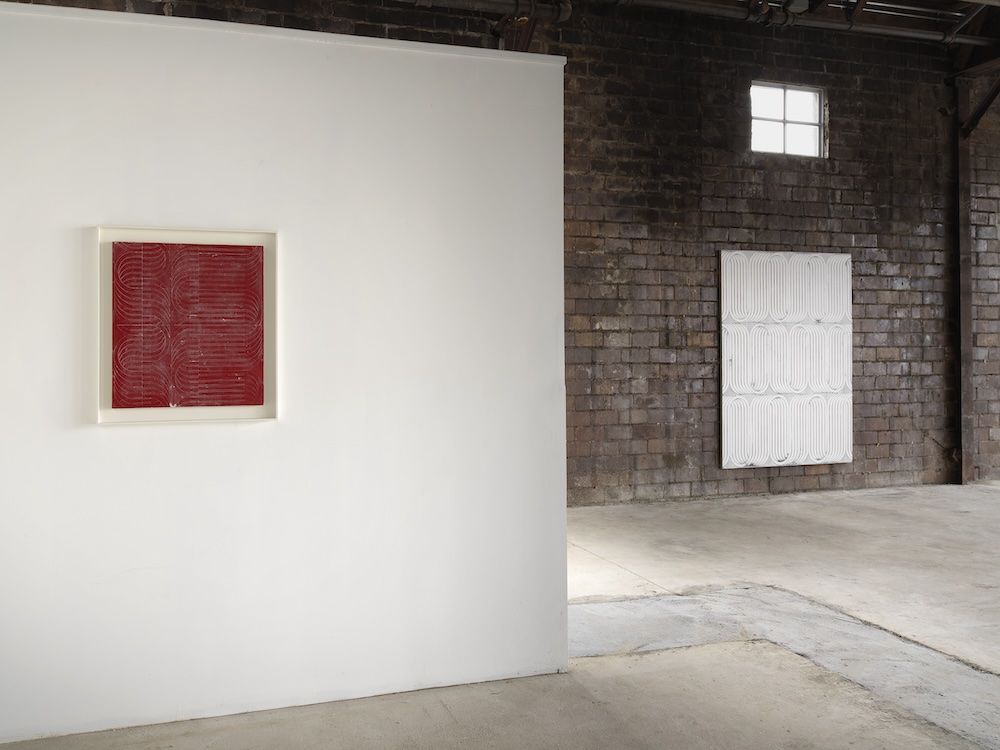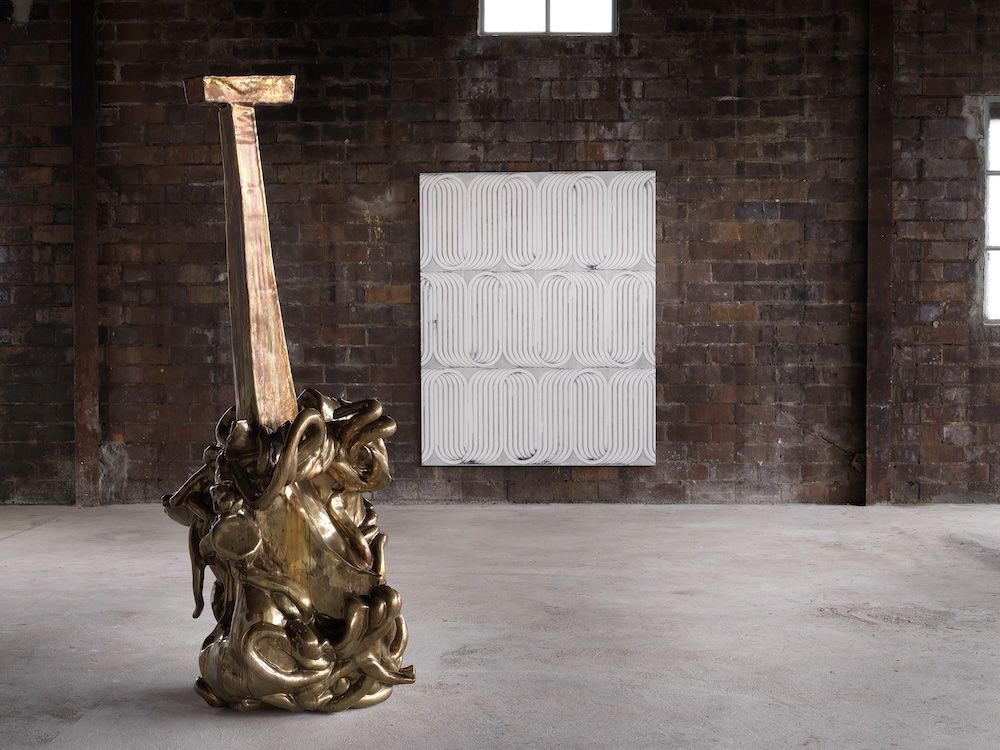ASSEMBLY 3
In year three, Assembly continues to evolve to reflect the reality of managing 25,000 ft2 of private space intended for the public good. Following the deep freeze of December 2022, which rendered the building’s sprinkler system permanently inoperable and made clear that the climate would be a more central partner in the project than anticipated—and recognizing the impracticability and inadvisability of heating a volume on this scale to human habitability throughout a Catskills winter—we have moved to a seasonal model. A second focus gallery, in a space that was originally envisioned as a restaurant and became a vintage furniture boutique, now joins the exhibition space.
Founder Bosco Sodi selected the artists for the two focus gallery installations, Johnny Abrahams and Davide Balliano, to combat the widespread flattening objectification of art. Which it turns out is, paradoxically, most damaging to painting. Despite seeming like a pretty unalloyed good in support of artist awareness and brand-building, Instagram and the like, with their don’t bother being there ethos—when layered on top of the necessary practical evils of websites, PDF portfolios, and online viewing rooms—are in fact killing art as an empirical enterprise. The danger is that all art is reduced to graphic design, with painters pumping out the equivalent of rasterizable logos.
Bosco’s canvases alone are three and a half inches deep, and twice that thick when painted. Much of their meaning gathers in the canyons formed by the drying and cracking of thickly applied sawdust, pigment, and glue on their surfaces. Meanings that are completely inaccessible through reproduction. But we seem to have arrived, rather quickly and with a bizarre lack of reflection—now that all of us are equal as digital content creators—at a collective understanding that it is possible to say or know something about actual things that we have never actually seen. Which is both a self-defeating absurdity for art and an aesthetic abomination. Alma Allen’s organic sculptures, which are very good at being difficult to know—even in person—tap into the same, satisfying infinite diversity of form to be found in the products of nature.
The main exhibition volume continues to showcase a selection of Bosco’s work in a large-scale, freeform version of open storage. All of these are objects that would otherwise be moldering away in crates. The selection encompasses old works and new. Overall, the presentation is meant to assert the power of being present somewhere long enough to lose oneself in the physical pleasure of it, particularly when surrounded by irregularity and imperfection. So why would Bosco, whose paintings are made through the operations of chance and nature, enlist Abrahams and Balliano, two of the more controlled painters at work today—whose canvases could almost have been produced by CNC (computer numerical control)? In an age of visual shouting, whispering is an increasingly effective strategy for being seen. Noise creates a demand for silence and the sense of calm that comes with paying close attention to something, anything.
Abrahams’ and Balliano’s meticulous paintings generate energy through the compressed application of a deliberately limited range of exacting gestures. To say that there is little new in them—with their clear antecedents in the period from the end of Abstract Expressionism in the late 1950s through the triumph of Minimalism in the 1970s—would be as foolish as saying that there is nothing new to be found in a folksong or a prayer. It is the indivisible things that yield the most through repetition. A line, and its divergence from another: any deviation from a mean. The centering thing—the thing that Bosco wants to elevate through Assembly—is the quality we associate with craft, the fine line of human care that separates a canvas with paint on it from a mirror for the soul.
–Dakin Hart
JOHNNY ABRAHAMS and ALMA ALLEN
Focus Gallery Left

The paintings of Johnny Abrahams (United States, 1979) speak the language of Minimalism suffused with a sensibility for materiality and an affinity for the post-war tradition of the shaped canvas. A native of Tacoma, Washington, Mr. Abrahams’ work debuted at Frieze London in 2013 with Jack Hanley Gallery. More recently, he has had solo exhibitions in New York, London, San Francisco, Cologne, Copenhagen, and Seoul. Mr. Abrahams lives and works in London.
Often realized in stone, wood, or bronze—materials hand- selected from quarries or foraged from landscapes in the area surrounding his studio—the works of Alma Allen (United States, 1970) emit a mysterious and ineffable life force. These abstracted, biomorphic shapes feel talismanic not only in their atmospheric qualities but also by way of their playfulness: bronze sculptures appear impossibly malleable, even liquid; wood and stone grain patterns are accented to highlight their material history.
DAVIDE BALLIANO and ALMA ALLEN
Davide Balliano (Italy, 1983) is an artist whose research operates on the thin line of demarcation between painting and sculpture. Utilizing a raw, minimal language of abstract geometries in strong dialogue with architecture, his work investigates existential themes such as the identity of man in the age of technology and his relationship with the sublime. Through a practice that is self-described as monastic, austere and concrete, Balliano’s meticulous paintings appear, upon first glance, clean and precise. However, closer inspection reveals scrapes and scratches that uncover the ground underneath the layers of paint, as a decaying façade of abandoned modernistic intentions. Originally trained in photography, Balliano shifted to painting and sculpture in 2006 while relocating to New York City, where he currently resides and works.
Often realized in stone, wood, or bronze—materials hand- selected from quarries or foraged from landscapes in the area surrounding his studio—the works of Alma Allen (United States, 1970) emit a mysterious and ineffable life force. These abstracted, biomorphic shapes feel talismanic not only in their atmospheric qualities but also by way of their playfulness: bronze sculptures appear impossibly malleable, even liquid; wood and stone grain patterns are accented to highlight their material history.
BERNAR VENET
Out Front
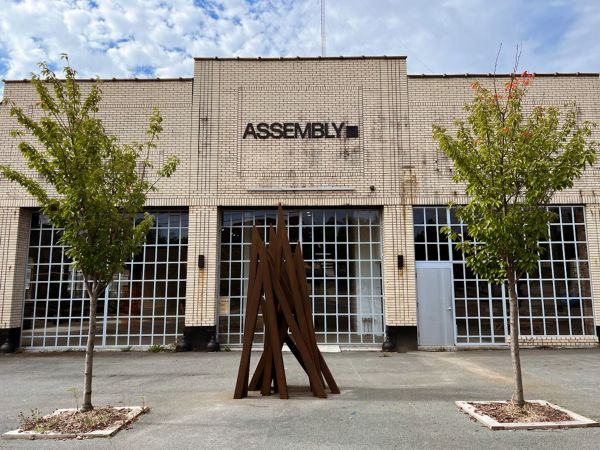
Bernar Venet (France, 1941) first gained recognition in the 1960s for the development of his Tar paintings, Cardboard Reliefs, and his iconic Pile of Coal, a pioneering example of sculpture without a specific shape. The year 1979 marked a significant turning point in Venet’s career: having recently begun a series of wood reliefs, Arcs, Angles, and Straight Lines, he created the first of his Indeterminate Lines and was awarded a grant by the National Endowment for the Arts.
Over the following decades his work has been exhibited extensively throughout Europe, the United States, South America, and Asia both in solo museum shows, as well as in major art events such as the Kassel Documenta in 1977, and the Biennales of Paris, Venice and São Paulo. To date, he is the most internationally exhibited French artist with 40 public sculpture exhibitions and monumental works permanently installed in cities including Auckland, Austin, Shenzhen, Berlin, Bonn, Denver, Geneva, Neu-Ulm, Nice, Paris, Seoul, Tokyo, Toulouse, and Vancouver.
BOSCO SODI: STUDIO REMIX
Main Gallery
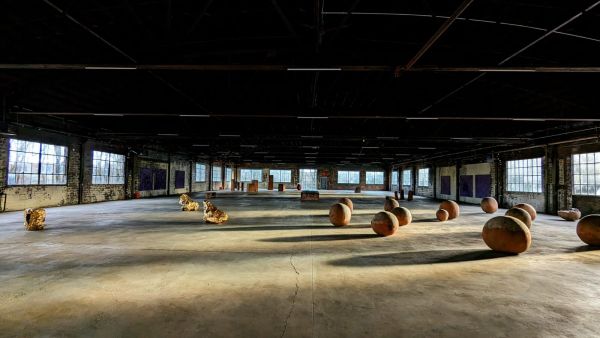
Bosco Sodi (Mexico, 1970) is known for his richly textured, vividly colored large-scale paintings. Sodi has discovered an emotive power within the essential crudeness of the materials that he uses to execute his paintings. Focusing on material exploration, the creative gesture, and the spiritual connection between the artist and his work, Sodi seeks to transcend conceptual barriers. Sodi leaves many of his paintings untitled, with the intention of removing any predisposition or connection beyond the work’s immediate existence. The work itself becomes a memory and a relic symbolic of the artist’s conversation with the raw material that brought the painting into creation. Sodi’s influences range from l’art informel, looking to artists such as Antoni Tàpies and Jean Dubuffet, to master colorists such as Willem de Kooning, Mark Rothko, and the bright hues of his native heritage.
